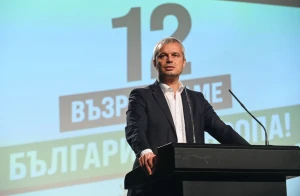
Situation in Kursk region, first downing of Russian helicopter by Ukrainian FPV drone. Serhiy Zgurets' column
The General Staff's report doesn't mention the situation in Kursk region at all, but says that Russia maintains a military presence on the border with Chernihiv and Sumy regions
Situation in Russia's Kursk region
Let's continue discussing the situation with a cautious "probably," as we must comment on and analyze these events with some uncertainty. For the first time since the start of hostilities, Ukrainian units have likely entered Russian territory in the Kursk region. Previously, only fighters from the Russian Volunteer Corps and the Freedom of Russia Legion had done so back in March. But now, we're looking at a planned military operation in the Kursk region that kicked off on August 6.
The force involved is probably around battalion strength—about 300 personnel—not counting any reserves that may be supporting this operation. We have several videos that back up this general assessment. These videos show the movement of HMMWVs and Stryker vehicles marked with the tactical triangle—these were dated August 6. The footage also shows armored vehicles with similar markings and Russian fighter jets conducting strikes within their own territory.
If we assess the situation simply, the offensive actions came from two directions: towards Sudzha itself, from the border along the route to Sudzha, and further to Kursk. The Leshnya River flows from the south of this route, and the second direction is towards the settlement of Zelenyi Shlyakh, along the eastern bank of the Snagost River.
I mention these rivers because they limit flanking threats from Russia's actions. In these areas, it will be extremely difficult for the Russians to carry out counterattacks, assuming they have the strength and resources.
We need to consider the goals that the Ukrainian side sets. First, they aim to prevent the Russians from advancing or attacking from the Kursk region into the Sumy region. Both Budanov and Zelenskyy have highlighted this threat, and the long-lasting shelling of Sumy underscores it. Creating a sanitary zone would significantly secure the Sumy region.
Second, these actions will force the Russians to respond to new threats by shifting forces and resources to the Kursk region from other areas, primarily Belgorod. The North group consists of 70,000 Russian personnel distributed across Kursk, Bryansk, and Belgorod regions—50,000 are opposite Kharkiv region, with Kursk and Bryansk hosting up to 10,000. If the enemy transfers units from Belgorod, it will simplify the situation in the Kharkiv direction and other areas by using reserves from elsewhere.
It is worth mentioning that one of the railway lines runs through Sudzha, a key line leading to Belgorod, the main logistics hub for the "North" group. Controlling Sudzha—both physically and through fire—will hinder the Russians' ability to transfer forces and resources. Maintaining this newly established bridgehead will enable, using its geographical features, the creation of a buffer zone and partially influence the internal situation in Russia. This, de facto, shows the Russian leadership's inability to control its borders and the situation nearby.
When the operation began, there was talk of a 7 km wedge, then in the afternoon Russian Telegram chats mentioned a front width of 10 km and a wedge of 15 km. The latest information talks about a 25 km wedge, indicating Russia has lost control over Sudzha itself, but this is according to Russian sources. There are no comments or messages from the Ukrainian side, but it's clear that this operation is in an active phase. The Russian side complains it's being carried out with support from Ukrainian air defense, drones, and electronic warfare, which are effective in this area.
A small remark: if such an operation is planned and executed, all forces and resources are considered, including our reserves and their balance. Other directions remain dangerous, such as Pokrovsk, Kurakhove, and Toretsk, where Russia tries to keep the initiative and advance further into Ukrainian territory. The question is whether we have reserves for such balancing operations. It might seem all reserves should be focused on these areas, but sometimes asymmetric solutions can yield more effective and unexpected results—or not. We are closely watching this new phase of the war with Russia and hope the military-political leadership has all the information and considers all battlefield risks.
By the way, this operation in the Kursk direction introduced a new detail of the hostilities—a video shows a Ukrainian FPV drone hitting a Russian Mi-28 helicopter. This is in the Kursk direction. This is the second helicopter destroyed; the first was a K-52 taken down with MANPADS. The video of this helicopter's destruction by an FPV drone shows the expanding range of weapons in the Ukrainian army, allowing them to deliver painful blows to the enemy.
Can we expect Russia to claim that Ukraine wants to seize the nuclear plant?
Oleksiy Yizhak, an expert at the National Institute for Strategic Studies, believes an asymmetric front operation has started in the Kursk region. This isn't just sabotage; there are signs of force stretching and deep strikes into Russia's rear.
"From this perspective, everything is logical and legal. The Russians will say anything, but the operation's course indicates it concerns the front, not gas supply or the Kursk nuclear plant," the expert noted.
He added that gas supply is transparent and statistically regulated. If supply drops, it's clear whether Ukraine blocked it or Russia reduced pumping.
"Remember, when Russia attacked in 2022, they increased pumping and moved along the gas line, knowing it wouldn't be targeted. Now, these lines can be used for advancement, not capture. This is just an asymmetric military operation. The Russians might try to spin it politically, but it'll be easily debunked," the expert said.
The US decision to place a number of its missiles in Europe
“We are talking about a new generation of American medium-range missiles, currently exclusively American. The United States has made significant progress, even when considering the ground-based versions of Tomahawk missiles. These versions can strike mobile targets, including ships and land-based targets, and are integrated into a new weapons system with new launchers.
These launchers, which we can now understand include autonomous and remotely operated launchers—essentially ground drones—are particularly relevant for the marines. This new generation of weapons will be integrated into specific US units in Europe, with recent activations in Germany.
The US is now deploying units known as multimodal task forces. These are fire units designed to counter what are called no-go zones. We've heard about such exclusion zones around Crimea and the Kaliningrad region, where Russian firepower prevents other countries' troops from operating. The US multimodal operational groups are designed to eliminate this fire resistance, allowing troops to operate deeply and freely by removing these obstacles.
Currently, an operational unit is being created. Reports indicate that the old Tomahawk missiles, in their new versions, will be deployed there. These new generations can likely hit mobile targets and include SM6 missiles, which have been upgraded from anti-aircraft and missile defense roles to very fast aeroballistic missiles, similar to the Iskander but faster and with greater range.
There are also announcements of a new "miracle weapon" called Dark Eagle, a hypersonic weapon. These weapons will enable US forces to operate freely in previously restricted areas. Unlike the past, this does not involve nuclear components, making it a more practical weapon for military operations,” Oleksiy Yizhak noted.
How will Russia react?
“They have little time, as we are talking about the first episodic basing since 2026, and then permanent. The only practical response from Russian sources is talk about removing all restrictions to deploy Kalibr missiles wherever they want, on any platforms—not just at sea. But they've been trying to do this for a long time, including with Zircon missiles, aiming to deploy them on any platforms they can.
We're mainly talking about ground platforms—they're the cheapest. Russia's issue isn't a ban; it's that they can't produce enough of these missiles. They might transfer some Kalibr missiles from the non-functional Black Sea Fleet to ground platforms. But it’s not just about the missiles, it’s also about the platforms from which they are launched.
In the United States, there are autonomous, robotic launchers, even drones with artificial intelligence. Russia doesn't have this capability. They might show they can launch Kalibr and Zircon missiles from ground launchers, but that's the extent of it. On a broader scale, Russia might try to follow or clone American strategies.
They’ve shown they can change the management system of their missile and strike forces to create a unified system. This system could coordinate drones, missiles, aircraft, and other strike means for combined strikes. We might have seen this recently with their combined attacks involving drones and missiles from various branches—naval, aviation, and army. This unified management system for their diverse strike weapons is possibly the most dangerous capability they could develop,” the expert believes.
Technology transfer by Russia to other countries
"There was a sense that they are trying to scare the world with the artificial spread of weapons technology. From recent reports in the Middle East - Iran again, following Shoigu's visit, began warning Israel exactly when and how the attack would happen. This kind of de-escalation shows that Shoigu actually told Iran they can't support a real war with Hamas.
This is the axis of evil, the so-called anti-Western coalition. It's clear they don't have the strength for a big war. They have power for a large hybrid war, but when it comes to specific numbers and technologies, they are still weak. I think the Russians can claim they will transfer some technology, but the reality is that technology, metal, weapons - all this is needed by the Russians themselves to endure this war and maintain their current attack pace: village a week," said Oleksiy Yizhak.
- News














































